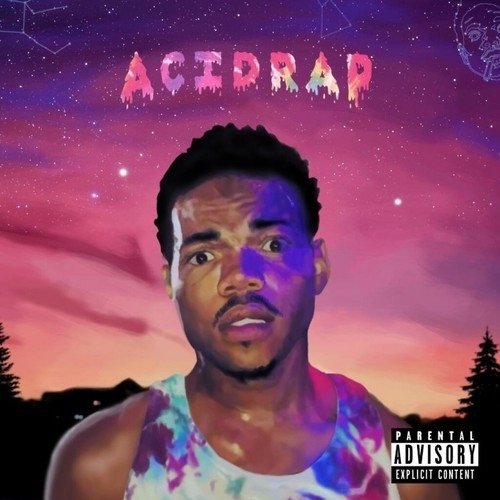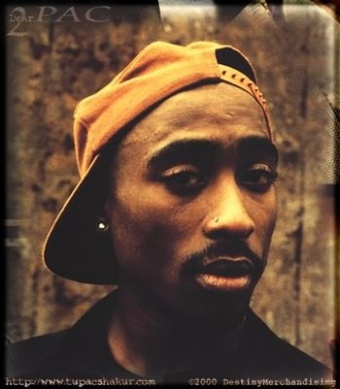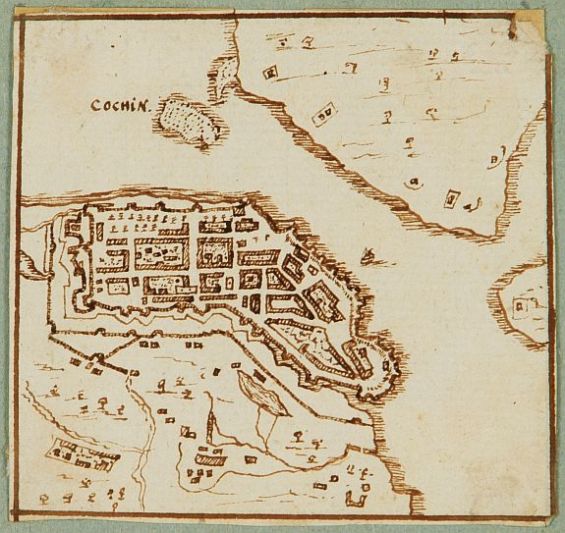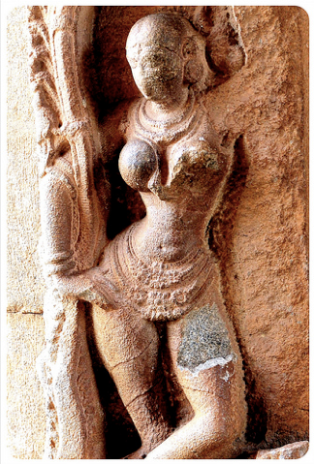This shit is the Wasteland. This shit is your brain on drugs. A nightmare panorama in 360 degrees, complete with monsters and bombed out landscapes. What struck me first about Yeezus was that so little stood out. The tracks ran together without any real demarcation, and when it was over there was nothing. I came away without a favorite verse or a favorite line, much less a favorite song. The only things that stuck in my head were the absurdities (“hurry up with my damn croissants”) and a few particularly jarring obscenities.
The emotion I felt mostly was horror and sometimes dark humor and never once anything tender. Kanye’s lyrics are undoubtedly sloppy, but more than anything they’re just almost always entirely pointless. His voice becomes only part of the instrumentals, maybe the critical part, but there is little of anything lyrical about it, it’s another tone in the bleak landscape that Kanye is painting.
The shock and awe factor wears off. The rawness and horror of the sound–the jarring synth, the rapid cuts, the monster noises–dissipate with a few listens. I’ve never encountered an album I so throughly wished I’d only heard once. And after the terror died I was left only with the emptiness of the album’s concepts. The most notable fact about Yeezus is that nothing seems to mean anything.
Let me say that again: on Yeezus, nothing seems to mean anything. I’m aware of how that sounds. It’s a claim that some critic or other has leveled against almost every rap album ever made and it’s a claim that has always been wrong. Not really a tradition of criticism that I want to take up, but I’ll say it anyway, because I think that this matters. Yeezus might be one of the most important records of this year, and I don’t doubt that it will change the sound and style of hip hop and popular music (let’s get that out of the way right now, the music on Yeezus, taken in total isolation, is often pretty brilliant, and Kanye’s ability as a producer to elicit pleasure and pain from the listener is still undoubtedly genius.) My concern is that Yeezus may be influential for all the wrong reasons; that it is a radical departure from the trajectory of Kanye’s career and the “tradition” of hip hop. A departure that doesn’t feel like much of an improvement.
Hip hop has always had a unique and complex relationship with meaning. This derived first and foremost from it’s role as black music; it’s connections to old African folklore and black biblical hermeneutics, the symbolic traditions of the slave song and the folk song and the blues. This history is still in the deep structure of hip hop; in its culture of word play and double-entendre and its tendencies to preach and subvert and confound. Meanwhile, the surface of hip hop has been much more self-consciously layered with it’s own invented stylings: posturing, slang, fucked-up-on-purpose-pronunciations and words-that-mean-their-opposite, street semiotics, and most importantly, the sample.
Hip hop samples in two ways. First, and obviously, by taking bits of existing music and audio clips and assembling it into rap beats. The meaning of any given rap song always rests–sometimes firmly, sometimes precariously–on the meaning of the sample. Artists can play with this relationship, by sampling shorter or longer fragments of songs–whole lines for hooks, or tiny pieces, or single words or single sounds–they can sample in ways which retain the original expressiveness of the sample, or subvert it, or reproduce it ironically.
And just as hip hop producers sample sound to create a beat, rappers also “sample” concepts from culture at large to produce that thing that is known as “hip hop culture”. They have always borrowed from a huge range of sources: from film to the Civil Rights Movement and black history to pop music to advertising and TV and politics and on and on.
I’m calling this sampling because of the way that hip hop lifted symbols, idioms, and ideas from other places, used them, shifted them, spliced them and stuck them together. The sampled symbol relates to the original just as sampled sounds relate to the original sounds. Never quite faithfully, but more fun and heavier with meaning, because it invokes the old usage, even as it means something different.
Sampling allows hip hop artists to create rich new things out of what has been. Often it creates vitality from musical and cultural forms that are stale and played out. And at it’s very best, hip hop samples the culture and music that White America “owns” to create a music and culture that is far more liberating than the original could ever have been.
More than anybody, Kanye has exemplified both kinds of sampling. His gift throughout his pre-Yeezus albums was to sample sounds and symbols and to deploy them to greater and more generous effect. His music always sounded different and somehow fresh, I think, because he drew on such a unique set of samples: different musics, the idioms of hip hop, of course, but also popular culture, Christianity and black churches, high fashion and mass consumption, stand-up comedy and spoken word.
Think about a song like Jesus Walks from his first album. The richness here comes from the sounds that Kanye uses, the gospel beat and hook, which made the song unique. But what makes the song complete is Kanye’s riff on preaching style, his hip hop fusion of the idioms of church, club and street into one smooth idea and style.
Or, on Graduation, Kanye raps: “I’m like the fly Malcolm X, by any jeans necessary.” That was a perfect Kanye lyric, a clever line, backed by somebody else’s vocals; a light-weight pop line that somehow managed to subvert and embrace the image of Malcolm, who had already been subverted and embraced as equal parts pop-icon and real radical. Lines like this–and Kanye songs were full of them–rearranged meaning in a ways that were sometimes problematic but also powerful, and always richer because they were new meanings that had an implicit relation to old ones.
But Yeezus is something completely different. Here Kanye uses samples in a way that reduces rather than expands their meaning. He specifically empties the symbolism of the sonic and conceptual samples that Yeeuzs is built from, so that the album actually seems to disparage meaning all together. Gone are the soul samples, the long hooks made from other people’s music, the big sounds and big features. Gone too are the conceptual samples: the civil rights riffs, the pop culture references, the black church remixed, even the trademark Kanye-style conspicuous consumption which could always double as something more loving.
When Kanye does invoke symbols on Yeezus he works to empty them, leaving them devoid of any meaning. There’s a kind of clever but insidious movement through the album to divorce symbol from meaning. Jesus becomes Yeezus, women become objects, Martin Luther King and civil rights are referenced repeatedly in ways that have to do with anything but black liberation. And on and on.
The culmination of the semiotic catastrophe is Blood on the Leaves, in which Kanye heavily samples Nina Simone’s Strange Fruit–a song about lynching–and builds it into a terrible/brilliant/terrible tableaux of failed relationships and divorce, while dropping some almost inexplicably dumb lyrics in hip hop history.
Blood on the Leaves is a microcosm of Yeezus in general. In some ways it succeeds, and in others fails and in yet others, fails again. The Strange Fruit sample, layered with the crazy brass, plus Kanye’s voice, plus auto-tune manages to create maybe the most perfect sonic depiction of the pain of a failed relationship imaginable. The problem is that, though he can evoke that pain through sound, he can’t even come close to telling us about it lyrically. And really, it’s all sort of cheating. Yes, the Strange Fruit sample is brilliant, but it’s also kind of deranged. Brilliant because it evokes an enormous amount of emotion; deranged because it co-ops that emotion to form a totally false equivalency: Kanye’s emotional problems + divorce = lynching. In Kanye’s version, Nina Simone’s voice is stripped of it’s meaning and is re-presented only as discord.
The problem, in other words, is that Kanye has exerted his not insignificant talents to the end of destroying meaning, rather than creating it. He has used his alchemical talents to turn gold into ash, misdirecting the power of Nina Simone’s voice and words off into the void.
It isn’t hard for me to believe that Kanye might make a song like Blood on the Leaves just for effect, that he knowingly abuses the sample, in the way that his lyrics abuse women and the way that his jarring sounds abuse the listener. Blood on the Leaves and Yeezus in general, is spectacular for its ability to abuse, to create chaos and nihilism and selfishness out of even the most generous of ideas, in it’s taking a range of samples–from Nina Simone’s voice to the “I Have a Dream Speech” to Jesus Christ–and to empty them of everything; to set them on the table as horror porn props.
And all this would be bad enough, except that this is Kanye we’re talking about here. I can understand why Kanye would want to push his sounds into unknown territory. But I can’t imagine what drives the grimly destructive lyrics of the album. I can’t figure out how the artist who launched his career with songs like Jesus Walks could (or would want to) write an album called Yeezus. On his first album, Kanye rapped:
I get down for my grandfather who took my momma
Made her sit in that seat where white folks ain’t wanna us to eat
At the tender age of 6 she was arrested for the sit-ins
With that in my blood I was born to be different
and even after releasing Yeezus he’s said: “I am my father’s son. I’m my mother’s child. That’s how I was raised. I am in the lineage of Gil Scott-Heron, great activist-type artists. But I’m also in the lineage of a Miles Davis — you know, that liked nice things also.”
So what is it that makes him abandon Gil Scott-Heron and Miles Davis; abandon activist art and nice things? What makes that artist actively denigrate the traditions he claims, so that he writes lines like:
Neck, ears, hands, legs, eatin’ ass
Your pussy’s too good, I need to crash
Your titties, let ’em out, free at last
Thank God almighty, they free at last
or
Black girl sippin’ white wine
Put my fist in her like a civil rights sign
Maybe the answer is that the way in which Yeezus subverts symbols and samples creates a mirror to the chaos of Kanye’s emotional world. And if so, then it’s amazing. It’s genius. It’s awful in the old fashioned, double-meaning sense of the word. Awe inducing. Jaw dropping. It’s the perfect sonic embodiment of a world upside down; of all the consequences of late-whateverism; of a perpetual dysfunctional politics of gender, sexuality, race, and class. It’s the world we live in. But it’s not enough because Kanye offers not one word of introspection or analysis or irony. It isn’t enough to show us this world. We also need some guidance.
Kanye may not seem like the ideal guide, and maybe he isn’t. But he does have something to say. As he said in his post-Yeezus interview with the New York Times (a piece of art that far surpasses Yeezus in almost every conceivable way): “Why do you want to control me? Like, I want the world to be better! All I want is positive! All I want is dopeness! Why would you want to control that?”
Or (more complicatedly) telling us, re. the Taylor Swift debacle that he just wanted “[to fight] for what’s right. I am so credible and so influential and so relevant that I will change things. So when the next little girl that wants to be, you know, a musician and give up her anonymity and her voice to express her talent and bring something special to the world, and it’s time for us to roll out and say, ‘Did this person have the biggest thing of the year?’ — that thing is more fair because I was there.”
This may seem like sheer egotism and critics keyed in on his “so credible, so influential and so relevant,” but I think that this is actually something much more wonderful and complicated: a vision of himself fighting for the right of an imaginary little girl to be able to live her dreams in a world that judges creativity fairly. It’s one of Kanye’s weird and moving lyrics; a sample that spins his VMA flip-out into a remastered version of MLK’s “by the content of their character” dream. Proof that Kanye is still capable of being the best that hip hop has to offer.
Kanye’s world view isn’t necessarily the most nuanced, but there’s a certain beautiful symmetry to it. He’s telling us that, really, you either want little girls to be able to live their dreams and be judged fairly, or you don’t. You are either in favor of more dopeness, or you’re opposed to it.
Maybe this shouldn’t be, like, a prevailing ethical system, but taking part in it was the fun of Kanye’s music. Listening to him was sort of like sitting in top-down ride with Kanye, flipping off the haters as you drove slowly past, on your way to shop, dance, drink, fuck, love and liberate your way to a new world order of sheer dopeness; a world of “complete awesomeness at all times.”
It was easy to tell which side you wanted to be on. But now, with Yeezus, it seems to me that Kanye has betrayed his own side and gone off into the darkness. Nothing on Yeezus seems interested in more dopeness. That’s clear from the first track, when the nightmarish background cuts to an incredibly beautiful 13 seconds of music and then right back to the awful. Nothing on Yeezus has anything to do with that dreaming little girl, because on Yeezus women don’t dream of anything except fucking Kanye and stealing his money.
My argument, at the end of all this is that, though it’s brilliant and everything, Yeezus is pretty much a waste of Kanye’s potential and I wish somebody to talk to him and say: “Kanye, you are so credible and so influential and so relevant. All we want is the world to be better. All we want is positive. All we want is dopeness. Why would you want to oppose that? Why would you want to make this album?”




